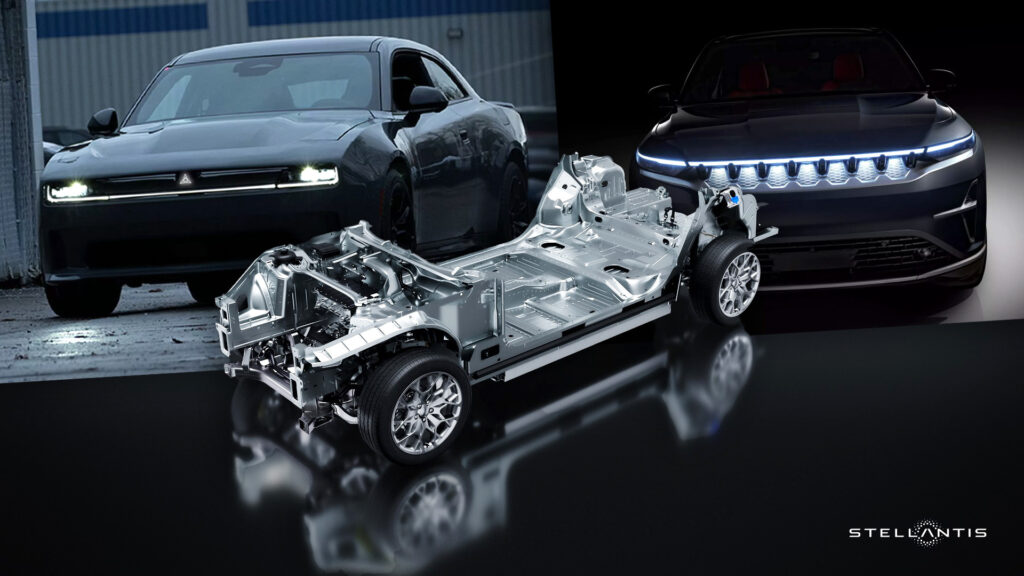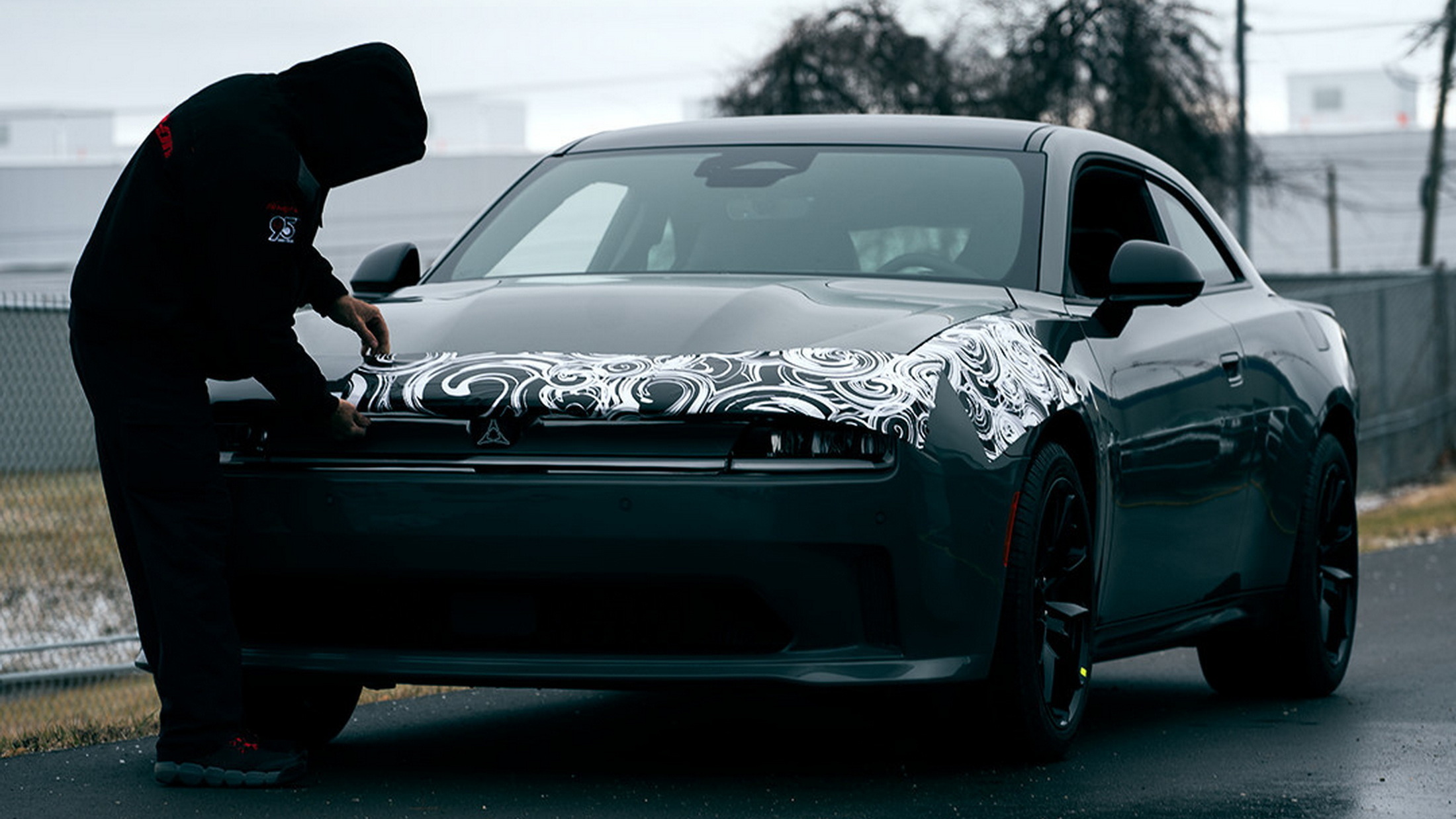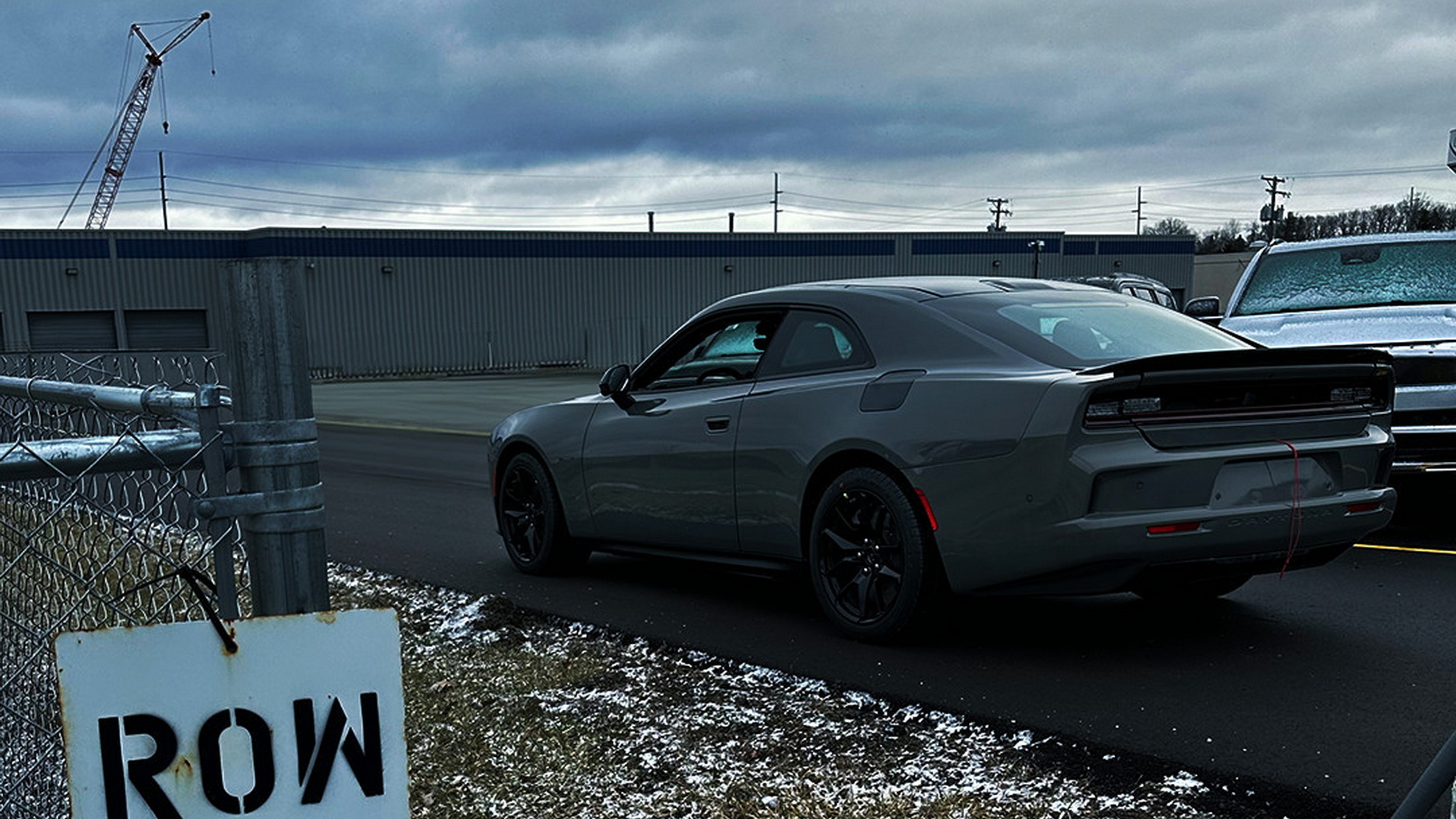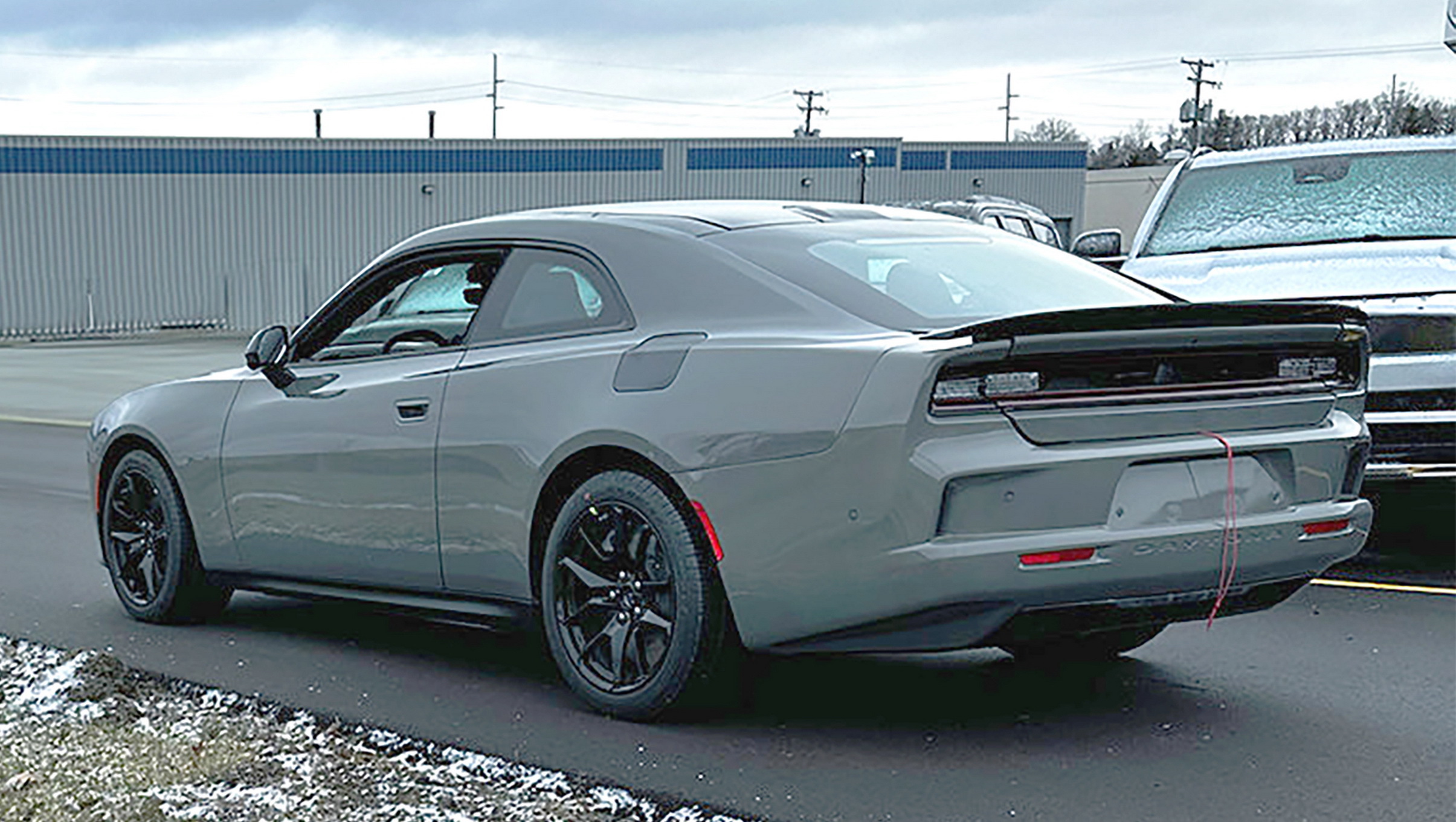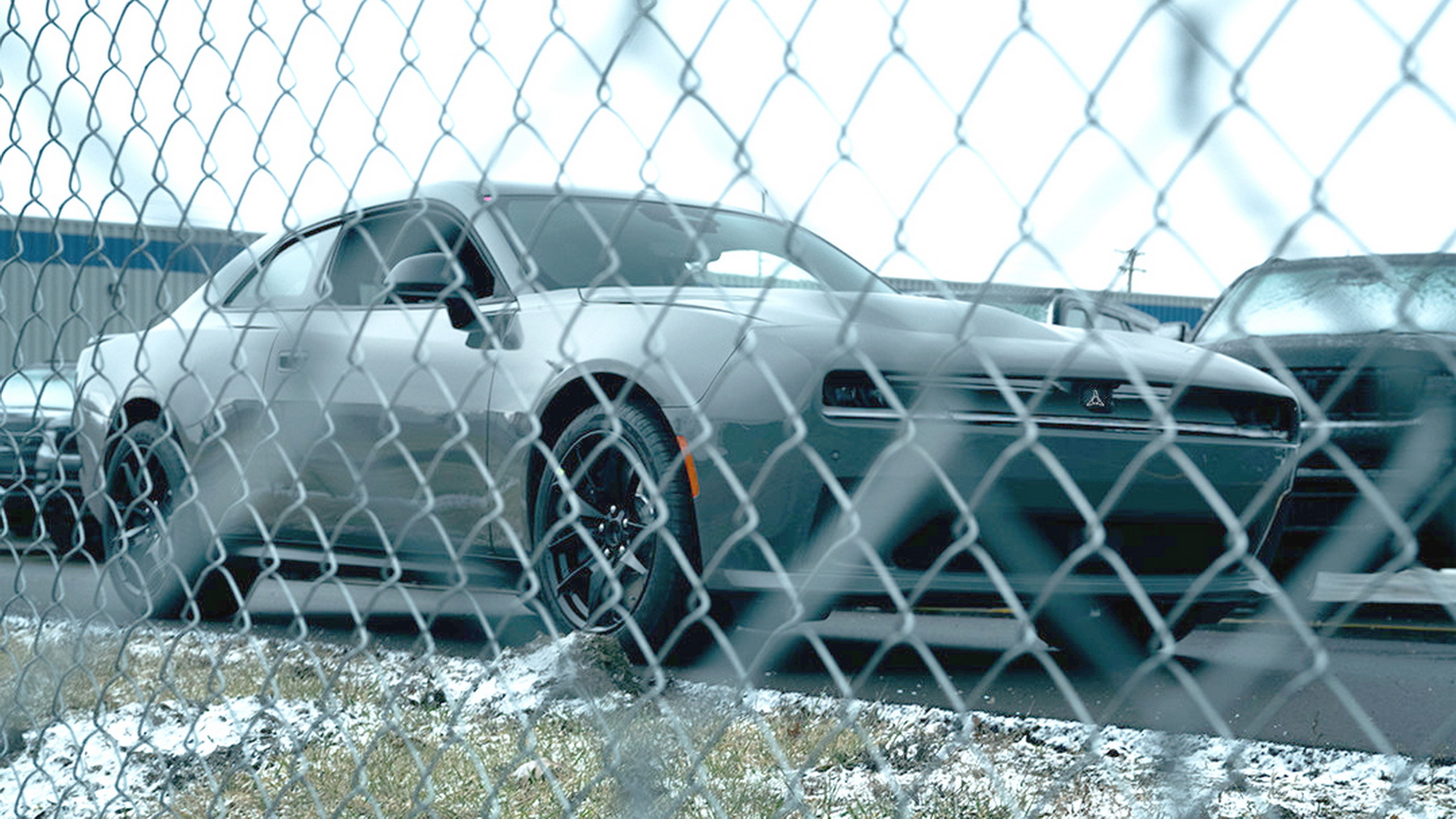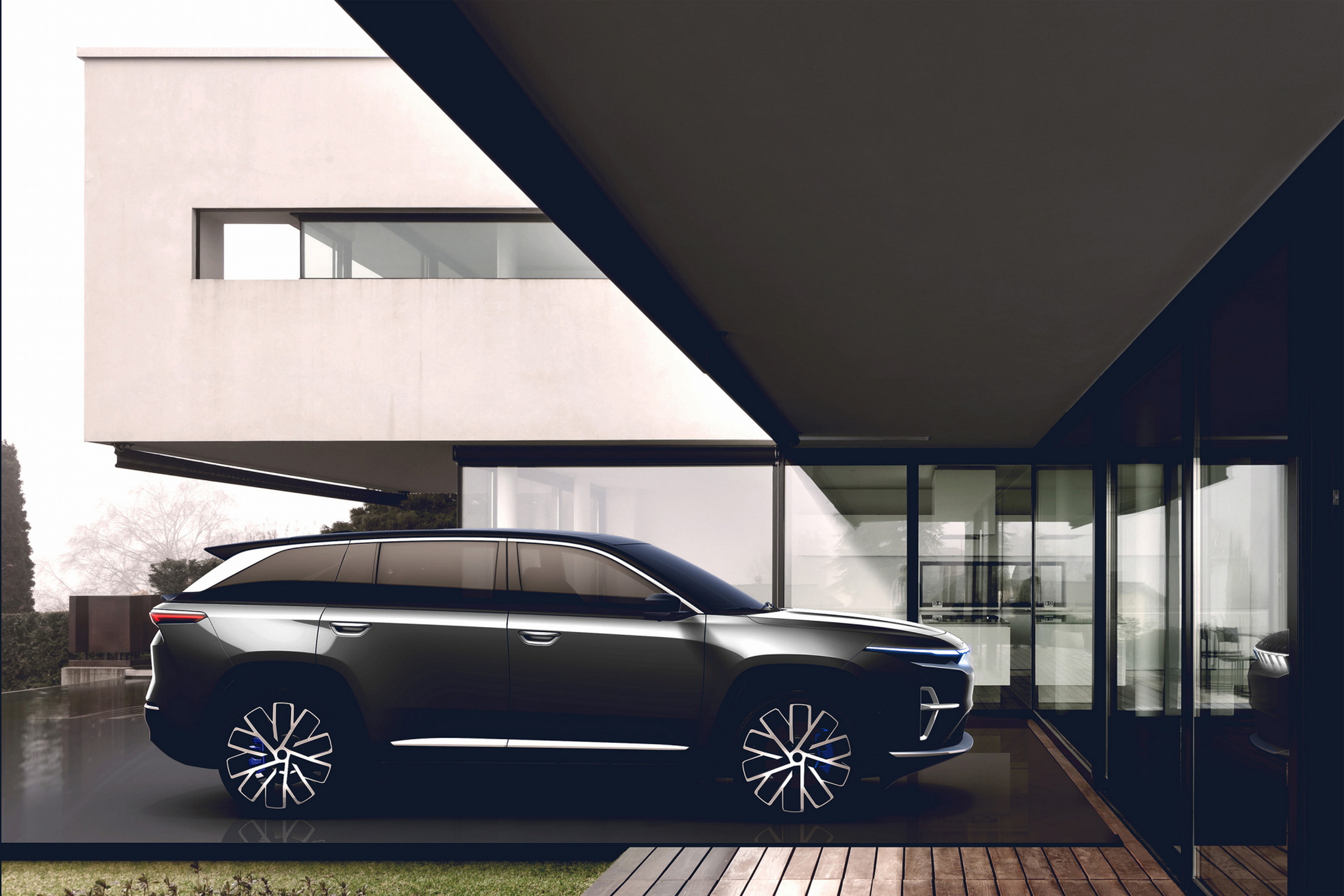Eight new vehicles from Stellantis are coming by the end of 2026, and they’re all going to utilize the group’s new STLA Large Platform. This versatile design is intended for use in cars, crossovers, and SUVs, enabling Stellantis to produce battery electric vehicles, internal combustion vehicles, or hybrids, all on the same platform. The automaker claims that this architecture will allow for a maximum range of 500 miles (800 km) and the potential to achieve acceleration from 0 to 100 km/h (62 mph) in the 2-second range.
One of four EV platforms slated to be introduced by Stellantis, including the STLA Small, Medium and Frame, the STLA Large will be available with battery packs that range from 85 to 118 kWh and 400-volt architecture. Furthermore, an 800-volt architecture is coming at a later date.
More: Chrysler’s Electric Crossover To Hit Roads In 2025, New Sedan Under Consideration
As mentioned before, internal combustion engines and hybrids also work with this platform and Stellantis says that it can incorporate front, rear, or all-wheel drive as well. To put it simply, this design appears to be a jack-of-all-trades. Whether it proves it be master of all or none, remains to be seen.
Nonetheless, this is great news as it will serve as the foundation for both the upcoming Dodge Charger, which will replace the Challenger muscle coupe, and the Jeep Wagoneer S, which will be the first cars to launch with this platform. The Detroit carmaker dropped additional info about each of those vehicles earlier this week. In addition, Stellantis says that it’ll launch six more vehicles with this platform between now and 2026. These will come in the form of cars and SUVs from Maserati, Chrysler, and Alfa Romeo.
More Power Than Hellcat V8s
Stellantis also dropped some details about the physical dimensions of STLA Large. It can support a wheelbase of 113.0-121.1 inches (2,870-3,075 mm). That covers everything from a Jeep Wrangler Unlimited to the Dodge Challenger and Charger.
Interestingly, Stellantis specifically says that this new platform “has the potential to carry extreme power that will outperform any of the existing Hellcat V8s.”
We anticipate that Stellantis will utilize its twin-turbocharged inline-six engine and its single-turbo 2.0-liter four-cylinder on the STLA Large platform. That said, the fact that the architecture was designed from the get-go to accommodate gas engines only further adds to the speculation that the Charger EV may not be exclusively electric.
Stellantis also mentioned that the platform will support drivetrain enhancements, such as limited-slip differentials or wheel-end disconnects, which have the potential to improve performance and reduce mechanical drag, thus enhancing efficiency and range.
Ride height can move anywhere from 5.50-11.3 inches (140-288 mm), and the maximum tire clearance is 32.6 inches (858 mm). That won’t be enough to get hardcore rock-crawling fans excited but it’s more than enough to allow for a number of different large vehicles with different aims all on the same platform. Flexibility is the name of the game here. Stellantis CEO Carlos Tavares laid out his view of the project in a statement.
“Our goals for our STLA platforms are ambitious but this is what our customers need from us today. Creating a family of vehicles from a well-engineered set of components that is flexible enough to cover multiple vehicle types and propulsions, overperforming any of our current products, will address each of our iconic brands’ customers. The flexibility and agility of this platform is its hallmark and will be a driving force for our success in the shift to electrification in North America.”
Having the ability to shift design based on where the market is headed should enable Stellantis to improve its footing across the globe. That’s especially important in the U.S. since it was the only one of the big three to backslide in sales during 2023. We’ll get a deeper look at the STLA Large later this year with the arrival of the new Dodge Charger and the Jeep Wagoneer S.




